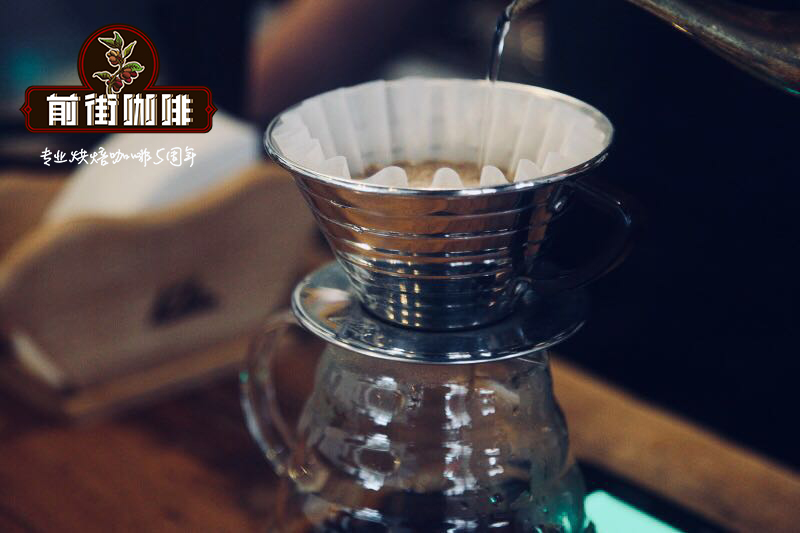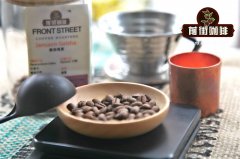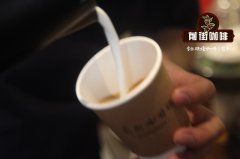Guatemala law Hannis San Gabriel Manor Coffee hand brew how not sour coffee percentage

Professional coffee knowledge exchange more coffee bean information please follow the coffee workshop (Wechat official account cafe_style)
History of Fahani Coffee
Located only 27 kilometers away from Guatemala City, it is the easiest to reach of all the Guatemalan coffee producing areas. The region is located on a very unique plateau and is part of a chain of Guatemalan volcanoes stretching from Mexico to El Salvador. There is a Pacaya volcano, the most active of the three active volcanoes in Guatemala, which often adds rich volcanic ash to cover coffee-growing areas. It is also because of the volcano that Lake Amatitlan, the third largest lake in Guatemala, is formed.
Compared with other high-altitude coffee-producing areas, the plateau terrain of this area allows coffee to be grown on more than 50% of its land. Such good land conditions may be why it was chosen by the Cakchiqueles as their agricultural center a long time ago and was declared the territory of the Kingdom of Spain during the Spanish colonial period.
Volcanic pumice soil, high altitude, abundant Rain Water, variable humidity, and an active volcano shape the personality of this producing area.
The high altitude plateau receives moist air from the lowlands to form clouds that cover the whole afternoon. The combination of fog and alpine cold wind keeps the air fresh and moist, creating an ideal micro-climate for the production of fine coffee.
The nearby Pacaya active volcano always supplies the area with light ash deposition to increase important minerals in the soil.
There is strong sunshine in the dry season. Although there are often clouds and dew in the morning, the moisture evaporates quickly, leaving the entire Farhanis plateau almost sun-dried.
The volcanoes in the Fahannis area are quite high above sea level and the soil is rich in pumice. The Farrakhan Plain is still an active volcano, so the coffee in this area is similar to that of Antigua. However, Rain Water's abundance, high and varied humidity, and large temperature difference give the Farrakhan Nice Plain a very different flavor. Located in the Farhanis-Santa Rosa producing area of Guatemala, Victory Manor, with an elevation of 1250-1370 meters, has been operating for more than 120 years, specializing in manor coffee with SHB very hard beans. Because it is located in the mountain area, it is possible to take advantage of the advantages of multiple trees and use shade planting to protect coffee trees and ensure water retention and absorption. Use very low doses of chemical fertilizers and pesticides to protect coffee and maintain its quality. The harvest season is from November to February every year, and farmers mobilize a lot of manpower to pick and filter ripe coffee cherries by hand. Then remove the flesh from the bright red fruit. After washing and standing in water, and then drying in the sun to reduce the humidity of coffee beans.
How to make Guatemalan coffee [Chateau San Gabriel in Fahannis]?
Front Street Coffee hand reference: weigh 15g [Chateau de San Gabriel] coffee powder, pour it into a grinder to grind moderately, the ground particles are slightly thicker than salt, we use BG bean grinder to scale 5R (standard sieve pass rate 60%), water temperature 89 degrees, V60 filter cup extraction.
The hot water in the hand flushing pot draws a circle clockwise with the center of the filter cup. Start the time when brewing, brew the coffee to 30g in 15 seconds, then stop the water injection, and when the time is up to 1 minute, the second water injection. The second water injection is the same as before, draw a circle clockwise with the center of the filter cup, and the water flow should not rush to the place where the coffee powder is connected with the filter paper, so as not to produce channel effect.
Coffee powder to the outermost circle to set aside a circle, and then another circle to the middle, 2 minutes 20 seconds, to the coffee to 220g, brewing coffee is finished.
| Japanese Ice hand Chong [St. Gabriel Manor in Fahannis]
The front street coffee ice hand flushes [Fahannis St. Gabriel Manor] reference:
Guatemalan coffee [Chateau San Gabriel in Fahannis], light and medium roasted, BG bean grinder with a scale of 5m (standard sieve pass rate 67%)
20 grams of powder, 150 grams of ice, 150 grams of hot water. The water temperature is 90 ℃ higher than the recommended normal hand flush, then 1 ℃ higher, normal grinding small Fuji 3.5 scale, ice hand flushing is slightly thinner half grid-small Fuji 3 scale.
The amount of steaming water is 40 grams and the steaming time is 30 seconds.
Water injection by stages, 60 grams of water in the first section and 40 grams of water in the second section. Use a thin but high water injection column and stir hard to make the coffee powder fully tumble, but be careful that the water level is not too high and do not rush to the edge of the filter paper.
The whole extraction time is about two and a half minutes (close to the normal extraction time of 20 grams of powder).
END
Important Notice :
前街咖啡 FrontStreet Coffee has moved to new addredd:
FrontStreet Coffee Address: 315,Donghua East Road,GuangZhou
Tel:020 38364473
- Prev

Guatemala Guava Plain Manor Wine Sun SL28 Coffee 1: 10 how to make it
Professional coffee knowledge exchange more coffee bean information please follow the coffee workshop (Wechat official account cafe_style) Guatemalan Coffee-New Guava Plain Manor wine tanning treatment in the Guatemala New Oriental region of the guava Plain Manor, the New Oriental region, the name implies, is located in the easternmost part of Guatemala. Guava wine sun flavor: pineapple, cantaloupe, apricot dried fruit
- Next

Guatemala Sleeping Beauty Manor hand coffee how to do_hand Sleeping Beauty Manor taste
Professional coffee knowledge exchange More coffee bean information Please pay attention to coffee workshop (Weixin Official Accounts cafe_style) Guatemala Coffee Quiche Sleeping Beauty Manor Guatemala El Quich Finca La Perl Country: Guatemala Region: El Quiche Finca La Perla Sleeping Beauty Manor Owner: Arenas family Arenas fa
Related
- Detailed explanation of Jadeite planting Land in Panamanian Jadeite Manor introduction to the grading system of Jadeite competitive bidding, Red bid, Green bid and Rose Summer
- Story of Coffee planting in Brenka region of Costa Rica Stonehenge Manor anaerobic heavy honey treatment of flavor mouth
- What's on the barrel of Blue Mountain Coffee beans?
- Can American coffee also pull flowers? How to use hot American style to pull out a good-looking pattern?
- Can you make a cold extract with coffee beans? What is the right proportion for cold-extracted coffee formula?
- Indonesian PWN Gold Mandrine Coffee Origin Features Flavor How to Chong? Mandolin coffee is American.
- A brief introduction to the flavor characteristics of Brazilian yellow bourbon coffee beans
- What is the effect of different water quality on the flavor of cold-extracted coffee? What kind of water is best for brewing coffee?
- Why do you think of Rose Summer whenever you mention Panamanian coffee?
- Introduction to the characteristics of authentic blue mountain coffee bean producing areas? What is the CIB Coffee Authority in Jamaica?

